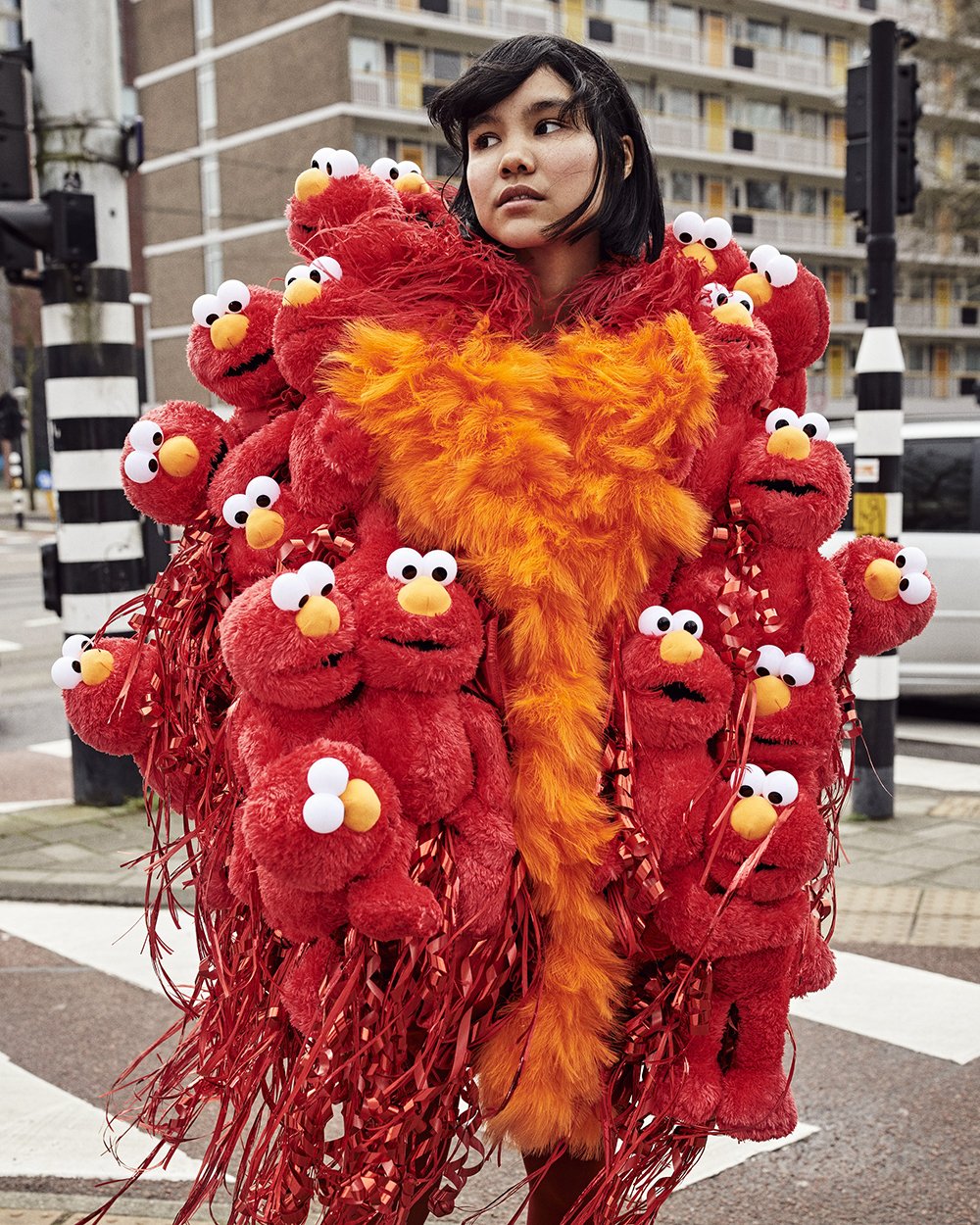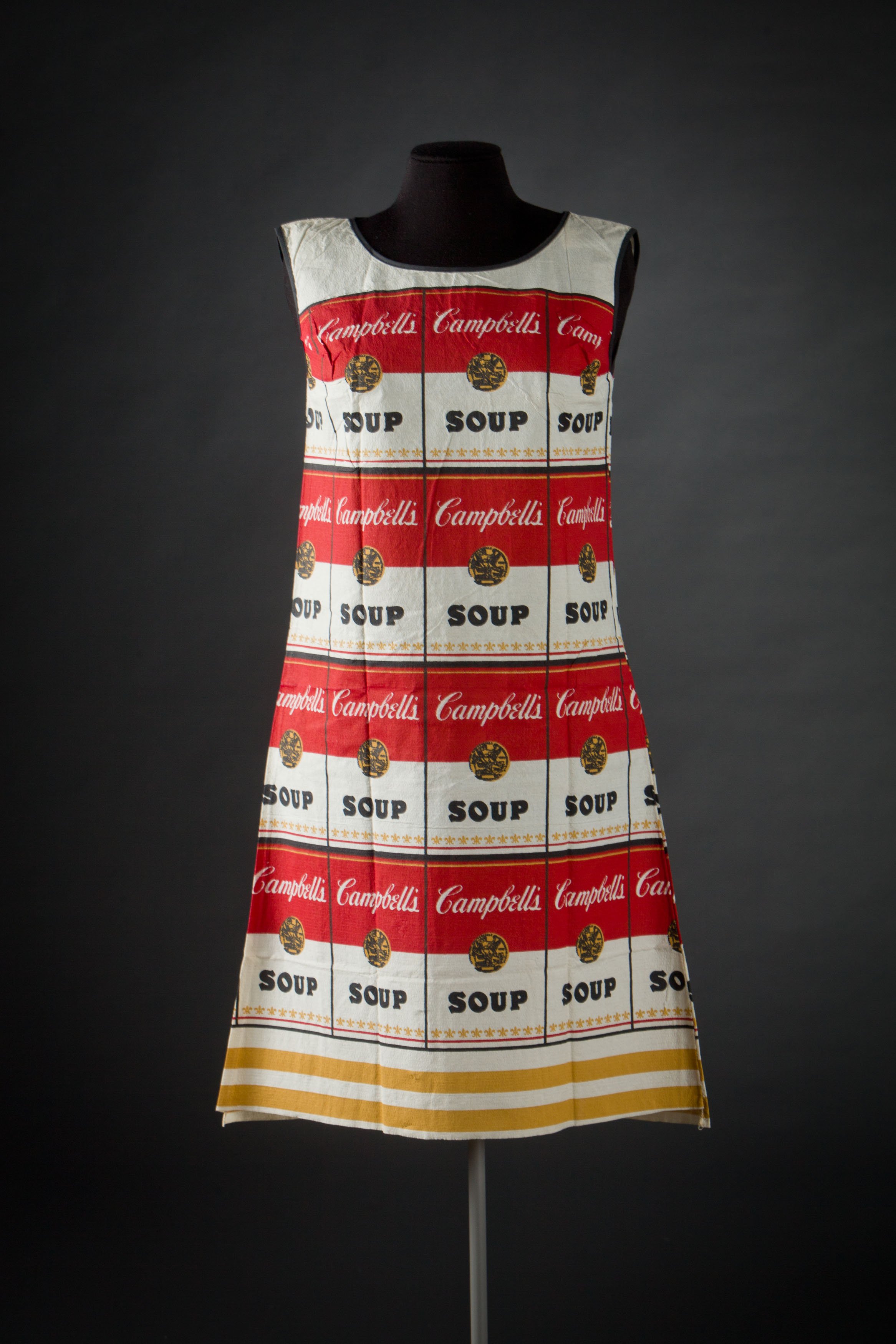Fashion in particular can offer us excellent possibilities for being– or at least for appearing to be – ageless. Fashion designers, celebrities, and ageing style icons are playing with that theme for their looks. A spectacular exhibition design by the multidisciplinary fashion house MAISON the FAUX shows how being young has become the norm in our visual culture and lifestyle.
Adult children and youthful seniors
‘Youthquake’ is about adult children and youthful seniors. The mythical fountain of eternal youth serves as the prologue for the exhibition. Historic ‘mini-me’ attire is followed by flapper dresses and miniskirts from the rebellious youth cultures of the 1920s and 1960s. Video and photography visualise contemporary marketing strategies that are inspired by the principle that ‘youth sells’. Young people are a source of inspiration for a visual culture that is dominated by an unattainable body image: extremely thin, beautiful, and young. Finally, a hopeful and critical counterbalance to the 21st century’s flood of youthful images is provided by some senior birds of paradise, including the 99-year-old fashion icon Iris Apfel who said: “I would like to be remembered as the world’s oldest living teenager.”
Mini-me
Special children’s wear did not exist before 1900. Children simply wore the same type of clothing as adults. The upper classes used these miniature grown-ups to display their wealth. But even today, parents are showing off their success through their children’s outfits, and on the red carpet superstars like Beyoncé pose next to adorable copies of themselves. In the exhibition the ‘mini-me’ phenomenon is demonstrated by examples of richly embellished lace and silk children’s dresses from the 19th century, as well as garments from contemporary baby and children’s wear collections by Dior and Gucci.
Forever young
Numerous pieces from the Fashion Museum in Hasselt (Belgium) illustrate that fashion reflects the spirit of the times. In the 1920s, upcoming movements for emancipation and social equality, and an increasing amount of leisure time heralded the age of the garçonnes, or flappers: women who wore loose-fitting, sequined dresses and sported boyish hairstyles. People of the younger generation were rebelling against their parents by means of their own style of clothing, music and vernacular. In the 1960s, young people were again opposing the dominant values of the older generations. With the advent of mass media, a strong youth culture was able to emerge. In 1965, the editor in chief of the renowned fashion magazine Vogue US described this development as an actual youthquake. In the exhibition, minidresses by Mary Quant and jumpsuits with psychedelic prints take the visitors on a journey back in time.
Age does(n’t) matter
The 1990s were an age of super models like Kate Moss and Naomi Campbell. Teenagers were dominating campaigns and the runway. The exhibition shows how in advertising the models in front of the camera were constantly getting younger and skinnier. Over the following decade, this new, idealised image began to shift, and cracks started to appear in this rigid form of representation. These days, brands who refuse to manufacture XL-sized garments, for instance, can expect a tidal wave of criticism. The exhibition shows work by photographers like Ari Seth Cohen from New York, and Harmen Meinsma from Rotterdam who are putting older models, and their advanced style, in the spotlights. Also featured are examples of the Granny Look that is currently widely embraced by a younger generation, as well as work by fashion designers like Walter van Beirendonck and Bas Kosters who are using the world of children as a source of inspiration for their collections.
Ageing well
The impact of age is different for every individual. Julika Rudelius’ 2006 film ‘Forever’ shows Americans in their sixties who are having cosmetic surgery as part of a never-ending pursuit of physical youth. And the photographic series by Juno Calypso zooms in on what people are willing to do to look younger: from wearing corrective underwear to getting face masks and fillers. In the exhibition’s finale, visitors will meet the eternal teenager Iris Apfel. This 99-year-old, world-famous style icon thinks, lives and dresses like a young person while her unique style simultaneously offers a positive counterbalance to the adoration of youth.
Press
Masterclass Bas Kosters


Collaboration
‘Youthquake. The Desire for Eternal Youth’ is realised in collaboration with Fashion Museum Hasselt. The multidisciplinary fashion house MAISON the FAUX is responsible for the exhibition design.





